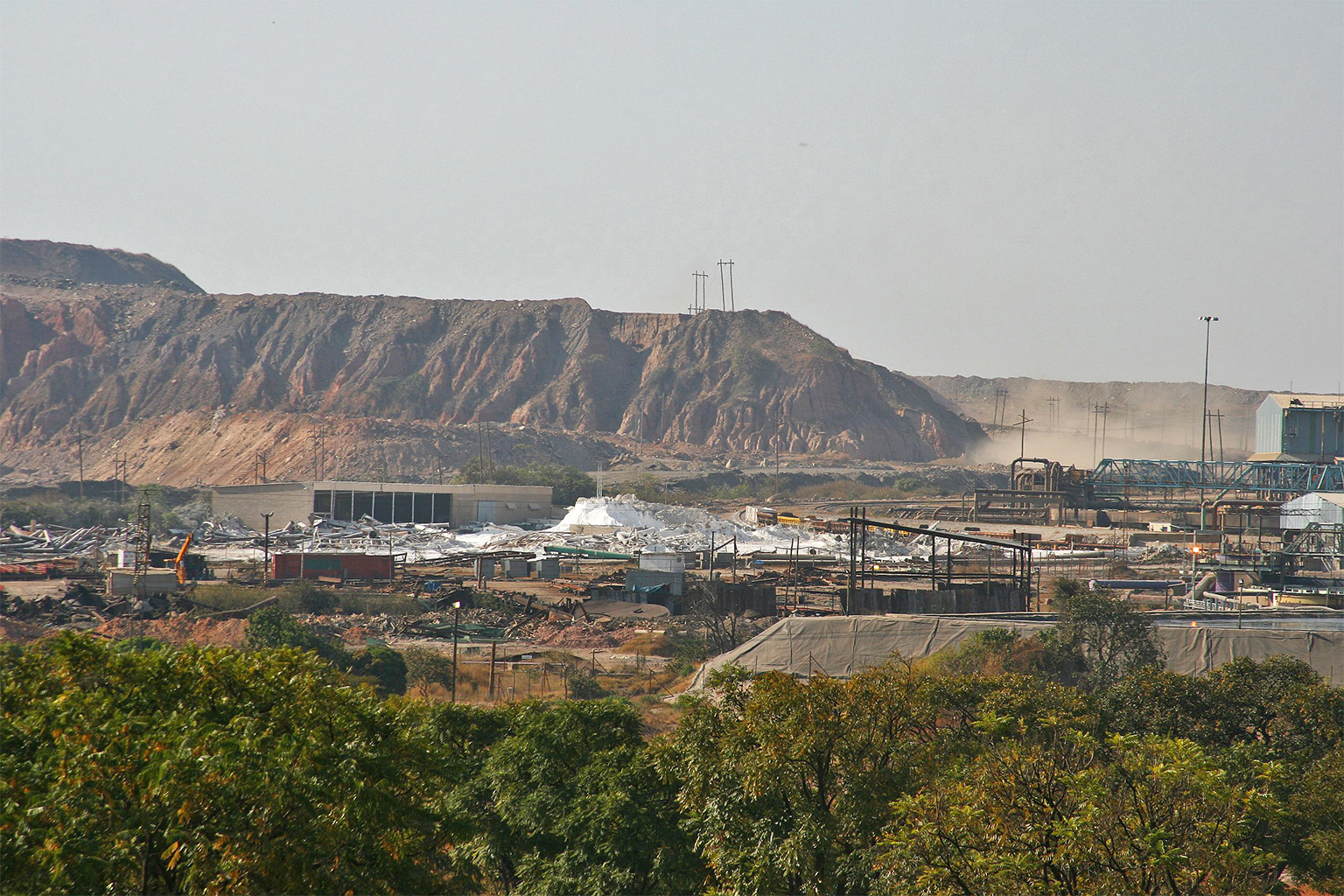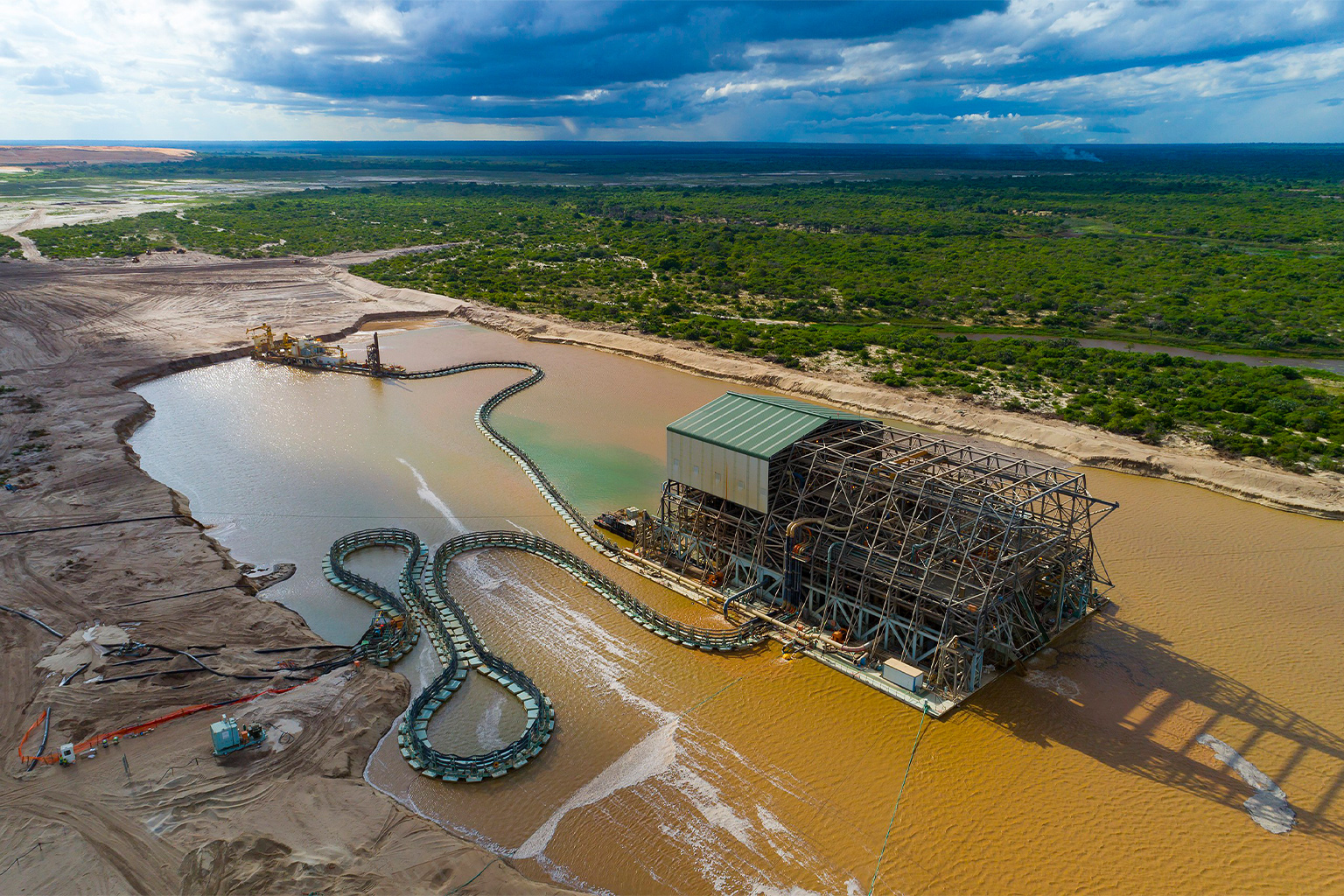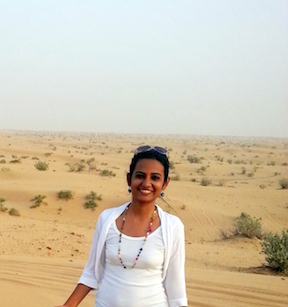- Meeting the Paris climate goals to curb global warming could quadruple demand for metals like lithium, cobalt and nickel by 2040, according to the International Energy Agency. About a fifth of these critical reserves are found in Africa.
- With mining activity ramping up across Africa, civil society organizations are asking for concrete changes in how mining is done and whose needs it addresses.
- Many activists who work with communities in Africa fear that far from benefiting from their mineral wealth, countries that hold reserves for critical minerals will pay the steepest price for their extraction, a replication of the mining footprint without a transformation in the way mining is done.
- While most activists and observers agree about the need to pursue the highest environmental, social and governance standards, many CSOs say it doesn’t have to happen as part of a superpower-led geopolitical race but be part of a globally accepted framework.
While in some corners of the world, the clean energy revolution conjures up images of electric vehicles and expansive wind farms, in countries with mineral reserves critical for producing that clean energy, the transition entails more than switching from a gasoline-powered car to an EV.
Demand for transition minerals like the lithium, cobalt, nickel and graphite needed for the batteries that power EVs and energy storage projects could swell fourfold by 2040 and pull $1.7 trillion in investments. On the cusp of this mining boom, businesses have never been more clear-eyed about the profitability of these minerals, and states have never been so bold in pursuing and securing mineral supplies deemed critical to decarbonization.
In the geopolitical arena, the U.S. government is straining to counter China’s hold over critical minerals mining and processing while promising that the scramble for essential minerals in Africa will not turn into a “race to the bottom.” But civil society organizations in Africa warn of the dangers of packaging mining as a cure for the climate crisis or a “climate solution” without fundamentally changing how mining is done on the continent. They say a real shift in how minerals are extracted and used is needed for a sustainable and just energy transition.
Speaking at the Mining Indaba, one of the largest mining events in the world, in South Africa in February, a top U.S. official, Jose W. Fernandez, declared that “we are all in on Africa.” With good reason: the continent hosts about a fifth of the global reserves of the minerals critical for an energy transition.
But more than half of the projects extracting these minerals currently are on or near lands where Indigenous peoples or peasants live, according to an analysis published in Nature. In Africa, that number is over 75%.
“The history of mining in Africa is riddled with injustices ranging from tax avoidance to land grabs,” Silas Olan’g, Africa energy transition adviser at the New York-headquartered think tank Natural Resource Governance Institute (NRGI), said at the COP27 climate summit in Egypt last November. Far from being a green “solution,” in many cases mining has “led to pollution and deforestation, which harm local communities and destroy the world’s carbon sinks,” Olan’g said.

At a minimum, the rush to mine “green minerals” must not trample on the rights of people who depend on or inhabit the land where these ores are found. But, that’s not enough, most CSOs say. We need ensure that “the transition prioritises people over profits and addresses African energy poverty and access challenges,” Nkateko Chauke, acting executive director at Oxfam South Africa, told a South African news outlet.
The mining expansion will also test the resolve to conserve ecologically fragile corners of the planet. In the Democratic Republic of Congo, for instance, cobalt reserves lie beneath the lush tropical forests of the Congo Basin. The growing mining footprint may also eat into unique habitats in Madagascar, where forest loss is already pushing its endemic flora and fauna to extinction. In Zambia, the protected area status of Lower Zambezi National Park hasn’t prevented the government from approving a copper mining project within its boundaries.
The vision of several CSO leaders on “just and sustainable transition” incorporates specific social, environmental and economic elements and improvements to national policies. They spoke to Mongabay of the need to include African communities, half of whom don’t have access to grid power, and local industries in this energy transition before taking the transition minerals from their lands.
On the mining side, it means ensuring communities are meaningfully consulted about decisions to mine and having the right to withhold their consent. Where extraction does occur, people should benefit from the mining boom, they said, and the minerals should only be extracted under the most rigorous international human rights and environmental standards.
The enormity and complexity of this undertaking is evident from the experience of four major mineral-rich African countries.

Cobalt in the DRC
The Democratic Republic of Congo is home to the planet’s largest cobalt reserves, an essential component of the lithium-ion batteries commonly used in EVs. Demand for cobalt is projected to grow by 60% by 2025.
“The DRC government has declared that the country is a ‘solution country’ for climate change because of its forests and natural minerals,” said Emmanuel Musuyu, executive secretary at CORAP, a Kinshasa-based civil society organization. “But for us, the important thing is to see if it takes into account the needs of the communities.”
Mining has a turbulent history in the region, where artisanal miners and large mining companies, both foreign and domestic, seek their fortunes in cobalt. More than 250,000 Congolese are estimated to work in the sector, of whom around 40,000 are children. Small-scale mines are often death traps for miners working in deplorable conditions. Larger mines and their owners, like Swiss-based mining giant Glencore, have been accused of corruption, violating human rights and destroying the environment.
Activists fear these destabilizing effects will engulf large swaths of the country as the mining footprint grows.
“Most of the minerals are found in the rural areas,” Musuyu told Mongabay. “The issue of land will become more problematic because of the intensification of exploitation.”
Decisions to mine should be made bearing in mind the true costs of extraction, not just profit margins, Musuyu said. He added it’s necessary to involve communities in the decision-making process from the start and to define and recognize land rights, including traditional rights, to prevent land conflicts from intensifying. This means implementing provisions for free, prior and informed consent (FPIC) and respecting communities’ right to say “no.”
Since there’s very little domestic demand for cobalt, the mineral is mostly shipped out, entering the supply chains of transnational corporations. In 2019, U.S. technology giants Apple, Microsoft and Tesla were named in a lawsuit alleging their products relied on cobalt produced by children laboring in dangerous conditions. A U.S. court dismissed the case in 2021, saying there wasn’t enough evidence that the companies caused the deaths and injuries to children working in mines. The nebulous nature of the supply chain makes it difficult to establish these causal links.

Companies must do more due diligence and make that information publicly available, Musuyu said. An NRGI report recommended the formation of industrywide associations to ensure they collectively meet environmental, social and governance (ESG) standards. What’s also needed is to identify points along the chain where there’s a high risk of corruption, like in awarding licenses, permits and approvals, during sales and trading, and in dealing with government-affiliated entities.
Even after projects are approved, companies should work with regulators, independent auditors and CSOs to flag any issues, they said. Countries should also enact and implement laws that protect activists, whistleblowers and journalists who work on mining-related issues, the NRGI report said.
Copper in Zambia
Zambia is Africa’s second-biggest copper producer, behind only the DRC. The metal is used in everything from electric vehicles to solar and wind power installations because it is an excellent electrical conductor. Global copper demand could nearly triple by 2050. Zambia’s president, Hakainde Hichilema, declared in 2022 that the country would increase its copper production from 830,000 to 3 million metric tons in 10 years to boost its economy.
But Zambia’s record of converting commodity booms into tangible benefits for communities is mixed, and the challenge will be to ensure these reach a larger section of the population. This doesn’t just mean making sure companies pay their fair share of taxes but also that the revenues promote inclusive growth.
To do so, governments must focus on more than just the tax benefits of mining, said Twivwe Siwale, an economist at the London School of Economics and Political Science. To do that, Zambian companies and workers should play a greater role in the mining value chain , from exploration to processing copper ore. Local communities would also benefit from the infrastructure, like machinery, equipment and processing plants necessary for extraction and processing. Increased funding for local companies would help them build their capacity for exploration and production, as well as give them control over processing minerals.
Civil society representatives also say this ambition must not come at the expense of the environment. Extensive extraction in Zambia’s copper belt has already dirtied the air, eaten into forests and tainted rivers.

In 2021, Indian mining giant Vedanta agreed to settle claims Zambian villagers brought against its subsidiary, Konkola Copper Mines (KCM). The residents alleged KCM’s Nchanga copper mine contaminated the Kafue River by discharging sulfuric acid and other toxic chemicals into the water.
Besa Kaoma, who works with the nonprofit Conservation Lower Zambezi, fears a similar fate could befall the country’s iconic Zambezi River, located near the proposed Kangaluwi copper project in Lower Zambezi National Park.
“River pollution caused by mining will threaten the fishery and wildlife habitat, and Zambezi River’s 2,000-ton subsistence fishery,” he said. Fisheries are a mainstay for communities in this region, and since the establishment of the national park, tourism has also generated a range of livelihood opportunities for residents. “The open pit would permanently destroy the park’s landscape, thereby reducing the tourism value of the park,” Kaoma said.
“If all the environmental regulations were to be followed according to the law, they can be [sustainable], but with the current status of environmental laws in Zambia, they cannot be sustained,” said Kaoma.
The Southern African nation updated its environmental regulations in 2018, requiring companies to carry out environmental impact assessments and develop environmental management plans. However, companies often don’t follow these regulations, Kaoma said, regulatory authorities must be empowered to enforce the rules.
Graphite in Mozambique and Madagascar
The East African country of Mozambique has one of the world’s largest reserves of graphite, a critical transition mineral used to make anodes for lithium-ion batteries. But many of the proposed graphite mines in the country would see the mineral exported to North America, Europe and Australia for high-value processing and manufacturing of battery materials.
In 2022, Syrah Resources, an Australian miner, received an injection of funds from the U.S. government to expand mining in Balama, northern Mozambique. The mine will feed a battery anode processing factory in Louisiana. But the troubled mine is plagued by labor issues, with workers alleging that the company fails to pay minimum wages or provide basic benefits.
Madagascar, off the eastern coast of mainland Africa, also has abundant graphite resources. Here, too, most of the new graphite mining activity is geared toward feeding factories for large-scale production of electric batteries outside the country, including Europe and the U.S. Madagascar currently exports most of its natural graphite to China and India.
“Despite producer countries now having strong bargaining power given the high demand for their minerals, the current urgency is exacerbating the risk that countries won’t benefit,” said Olan’g from the Natural Resource Governance Institute. “Governance standards are being lowered on the one hand, and on the other, companies and consumer countries are rushing to secure access to these resources, and some actors are willing to succeed at all costs.”
Many CSOs advocate for developing value chains that also power Africa’s own energy transition, and not solely those abroad. Ideally, these supply chains should help African companies become competitive suppliers of these minerals and employ local workforce at all levels. This would mean funding institutions and researchers and working in partnership with local companies. It also means being more receptive to domestic demand, for example, for commonly used electric two- and three-wheel vehicles, or developing battery storage that works for households and mini-grids.

One of the obvious ways to curb mining impact is to reduce overall energy demand, say climate scientists. This can be done by emphasizing energy efficiency in transportation, production, consumption, agriculture, urban planning and individual lifestyles. The other way to reduce the mining footprint is to invest in the recycling of critical minerals. The U.S. government already has a research and development program aimed at this. According to the International Energy Agency, by 2040, recycling could cut primary demand for metals like copper, lithium, nickel and cobalt by as much as 10%.
Africa’s mineral resources are relatively untapped, and new mining activity is inevitable for minerals like lithium that are only now being mined in industrial quantities. Murray Hitzman, director of the Irish Centre for Research in Applied Geosciences, said one approach to limit harm is to expand capacity at existing mines and mining sites and not open virgin areas for extraction, especially in ecologically sensitive regions.
Olivia Lazard, a fellow at Carnegie Europe focusing on climate geopolitics, recommended setting up “no-go” environmental zones. “Consider that these minerals don’t exist at all,” she said in a widely viewed TED talk on the blind spots of the green energy transition. One option is finding alternative supply sources and mining in countries where it can be done with the least damaging impacts.
While most activists and observers agree about the need to pursue the highest environmental, social and governance standards, many CSOs say it doesn’t have to happen as part of a superpower-led geopolitical race. The mining of critical minerals should be subject to a globally accepted framework that promotes a standardized and harmonized approach to these essential raw materials.
“We don’t need just slogans,” Musuyu said. “We need an energy transition that is really just.”
Banner image: A cobalt mine in central Africa. Image by Fairphone via Flickr (CC BY-NC 2.0).
Element Africa: Keeping platinum in the ground, and minors out of mines
Citation:
Owen, J. R., Kemp, D., Lechner, A. M., Harris, J., Zhang, R., & Lèbre, É. (2023). Energy transition minerals and their intersection with land-connected peoples. Nature Sustainability, 6(2), 203-211. doi:10.1038/s41893-022-00994-6














